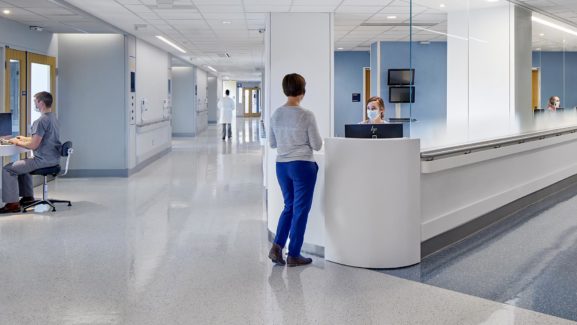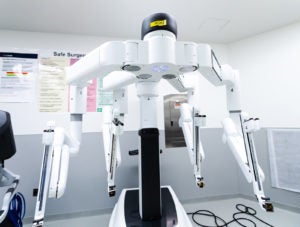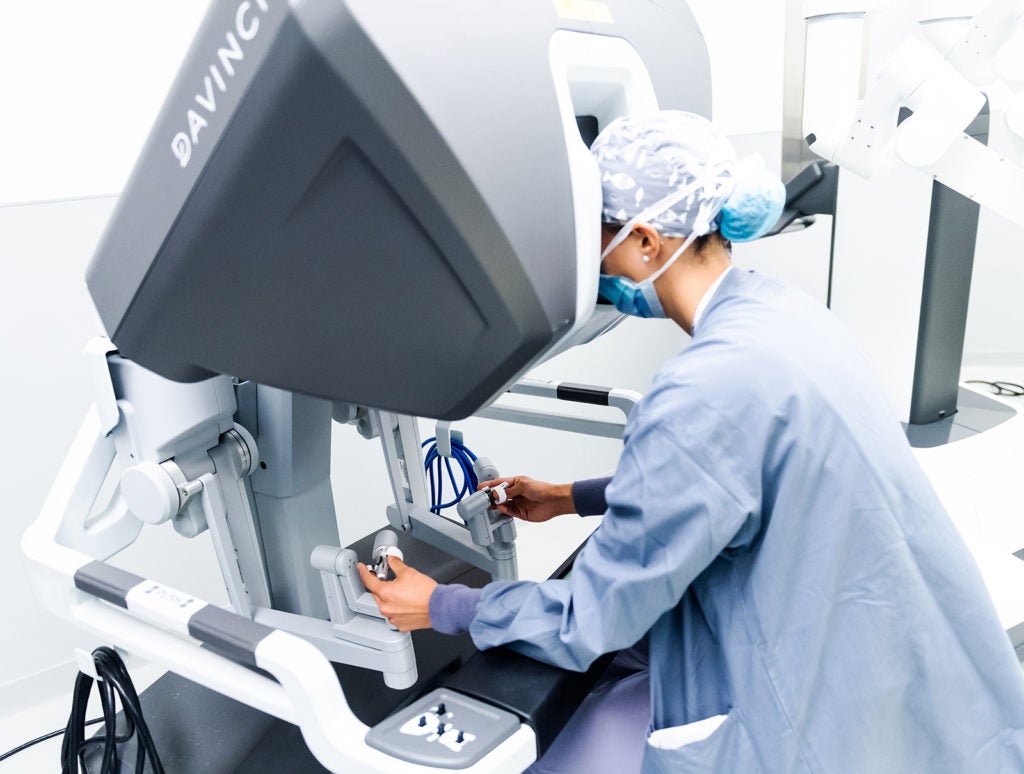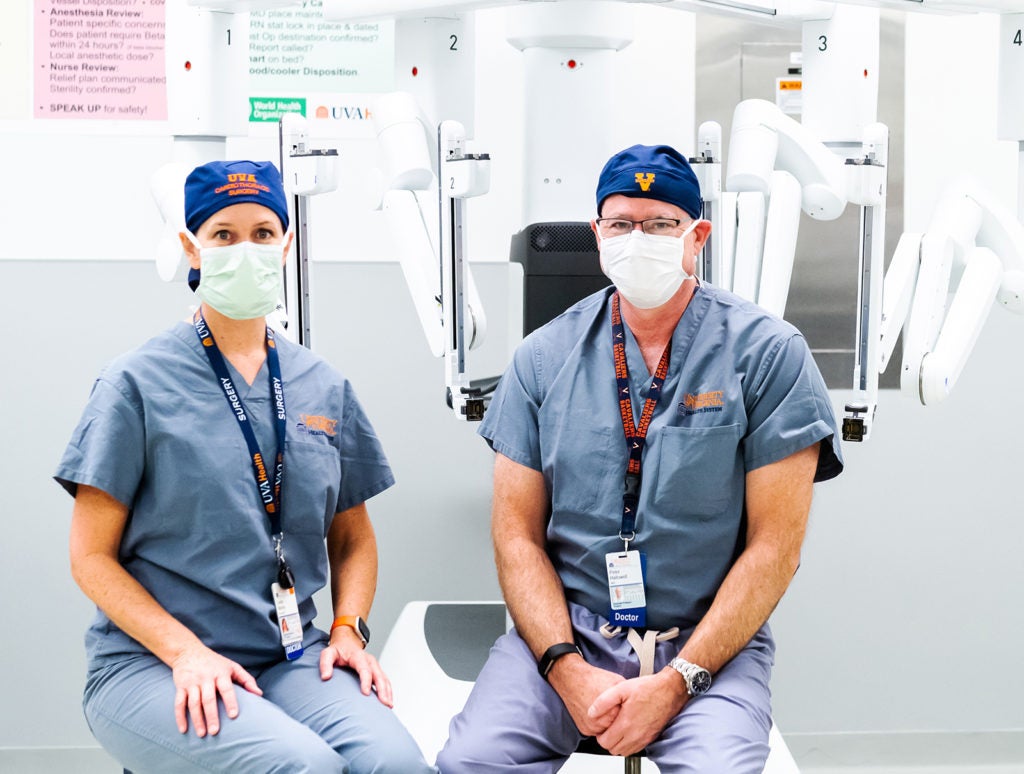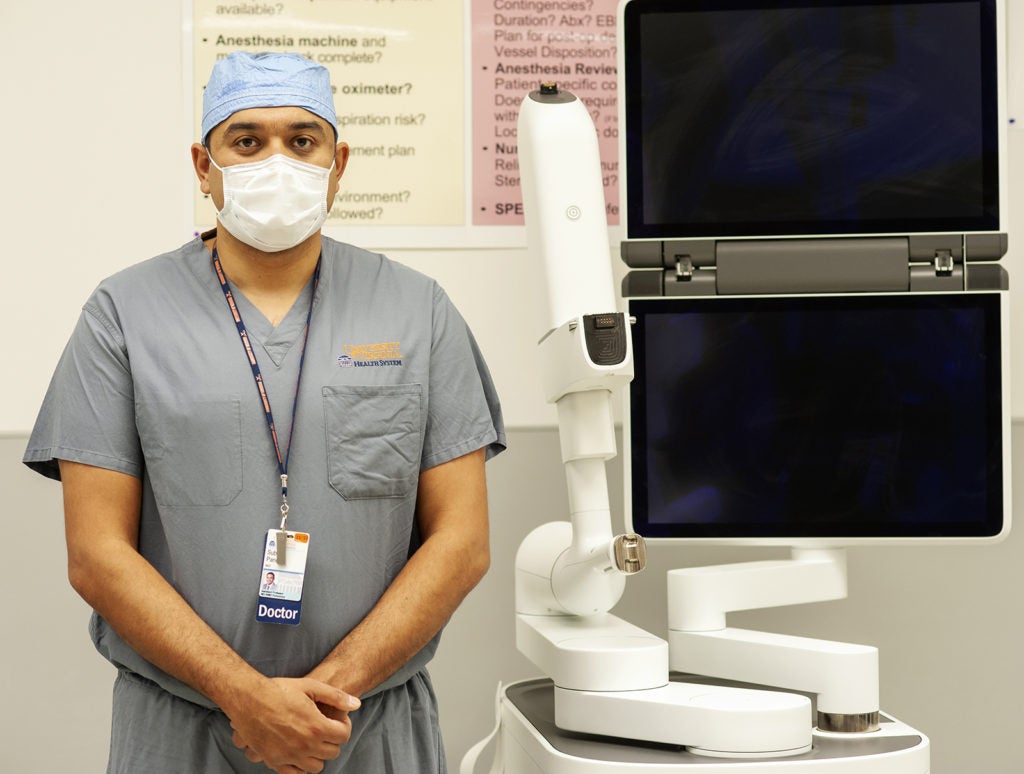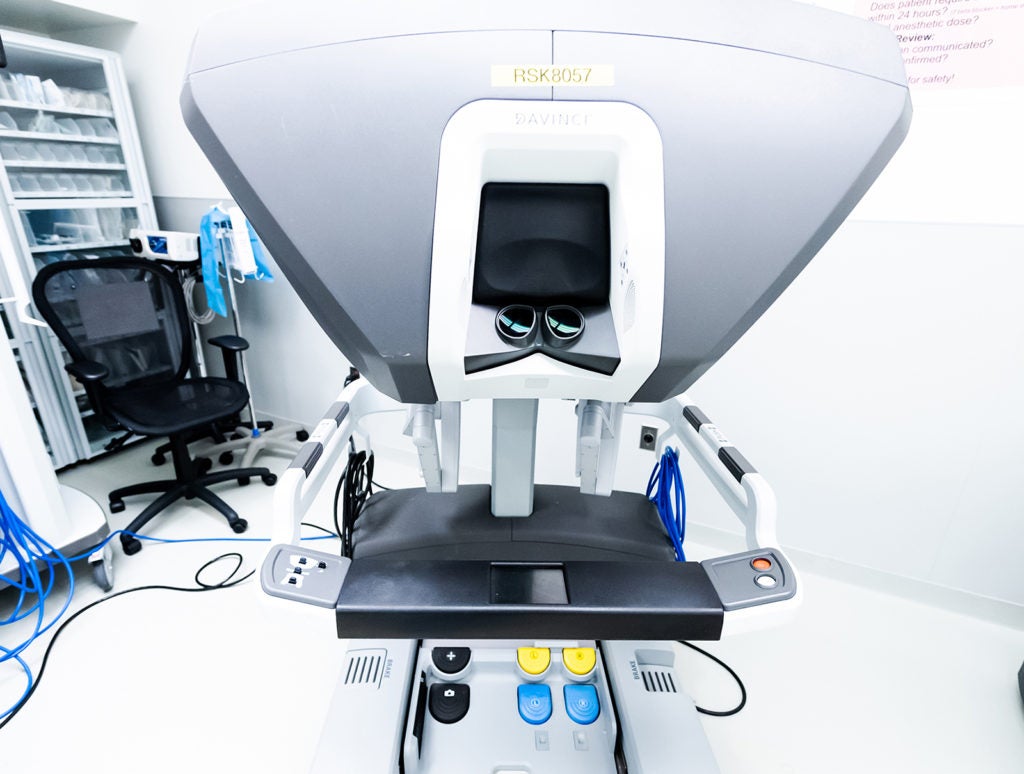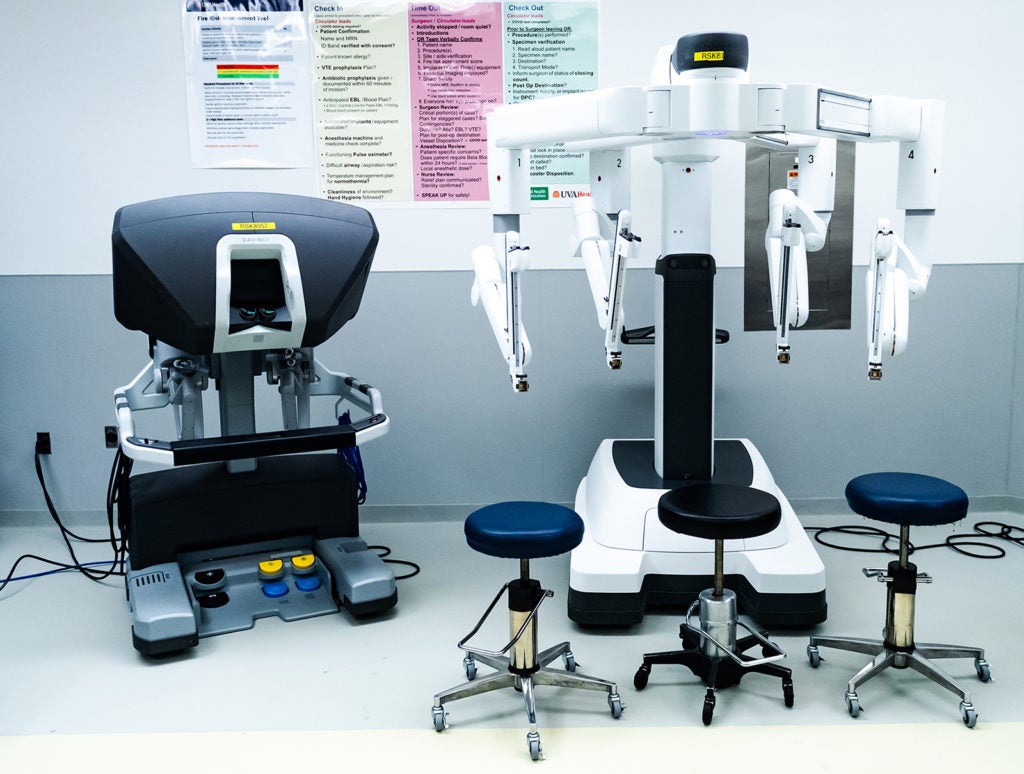
AMP Program Prepares Us to Boost Our Use of Robotic Surgery
Robots are becoming more common in the operating room. In fact, according to one report, the use of robotic surgery increased from 1.8% in 2012 to 15.1% in 2018. Here at UVA Health, we continue to push that number even higher today thanks to the AMP Program.
"Since it started last year, the AMP Program has allowed us to expand our fleet of robots from 4 to 7," says robotics program manager Terri Voight, RN. We now have six robots in use at the main hospital and one at our Outpatient Surgery Center.
“This has allowed us to really change and grow across service lines,” adds Voight. “We have used robotic surgery for gynecology, urology, general surgery, and transplant. Now we can offer robotic surgery for ENT and thoracic procedures. Soon, we’ll also be doing more transplant surgeries, including hepatobiliary, as well as pulmonology procedures.”
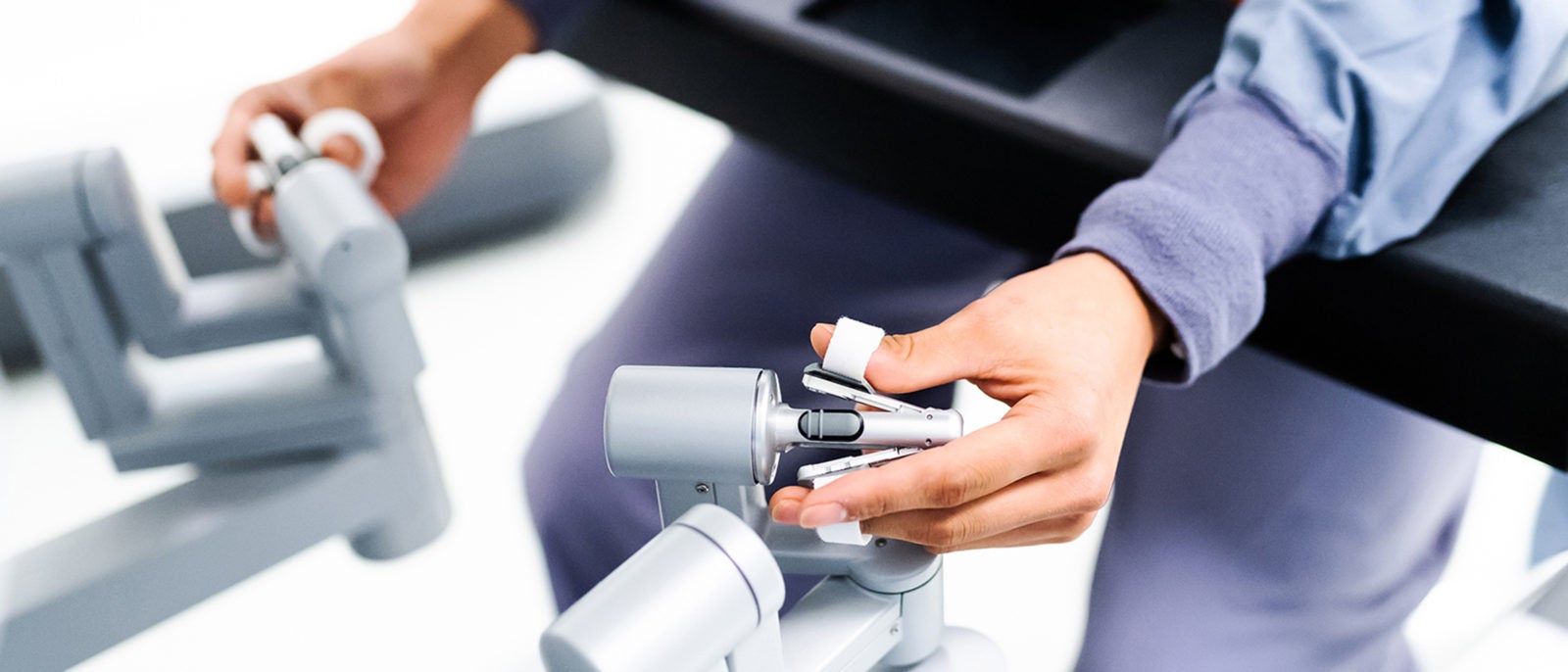
da Vinci Xi surgeon console
Why We’re Amping Up Robotic Surgery
The excitement over the shift to robotic surgery is well warranted.
Reason No. 1: It’s good for the patient. Robot-assisted surgical procedures are minimally invasive and have been proven to:
- Hasten recovery
- Decrease a patient’s length of stay
- Be less painful
- Lower the risk for blood loss and infection
- Decrease opioid use
"Providing a better surgical experience for our patients is our ultimate goal," says Voight.
Reason No. 2: New and experienced surgeons want to have access to this technology. Why? Because of the benefits to the patient, but also because robots allow them to expand their capabilities further.
"More and more surgeons coming in every year who want to use this technology,” says Voight. “In the past year, we’ve added 8 surgeons to our robotic surgery list. I have four more that have been added since July."
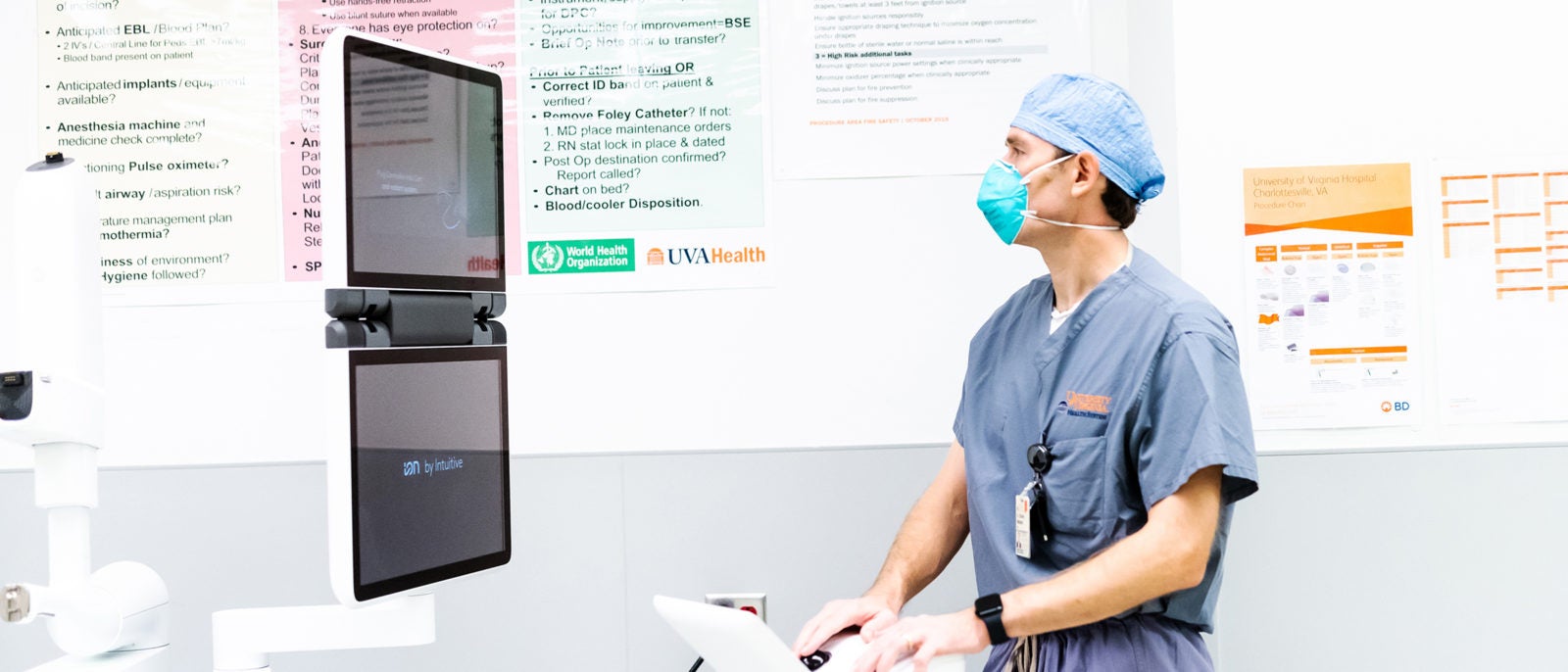
Charles Malpass, MD (Pulmonology) and the ION robot
Get to Know Our Robots
At UVA Health, we have three different types of robots in our robotic surgical suite.
- da Vinci Xi | This device is a versatile tool used most often and across service lines, including transplant, urology, gynecology, thoracic, and general surgery.
- da Vinci SP | The “SP” stands for single-port access. This robot is designed to access more narrow spaces, and is used primarily for ENT cases.
- ION | Our newest addition, the ION robot is a biopsy platform that is used by pulmonologists. It allows them to biopsy smaller nodules in hard-to-reach places of the lung, so they can diagnose cancer sooner and begin treatment sooner.
Which robots will be added next depends on what our surgeons need to maximize patient care. "We don’t know how quickly we’ll acquire more robots, but this is definitely a program that is continuously growing," says Voight.
Scroll down to meet the teams and the robots.
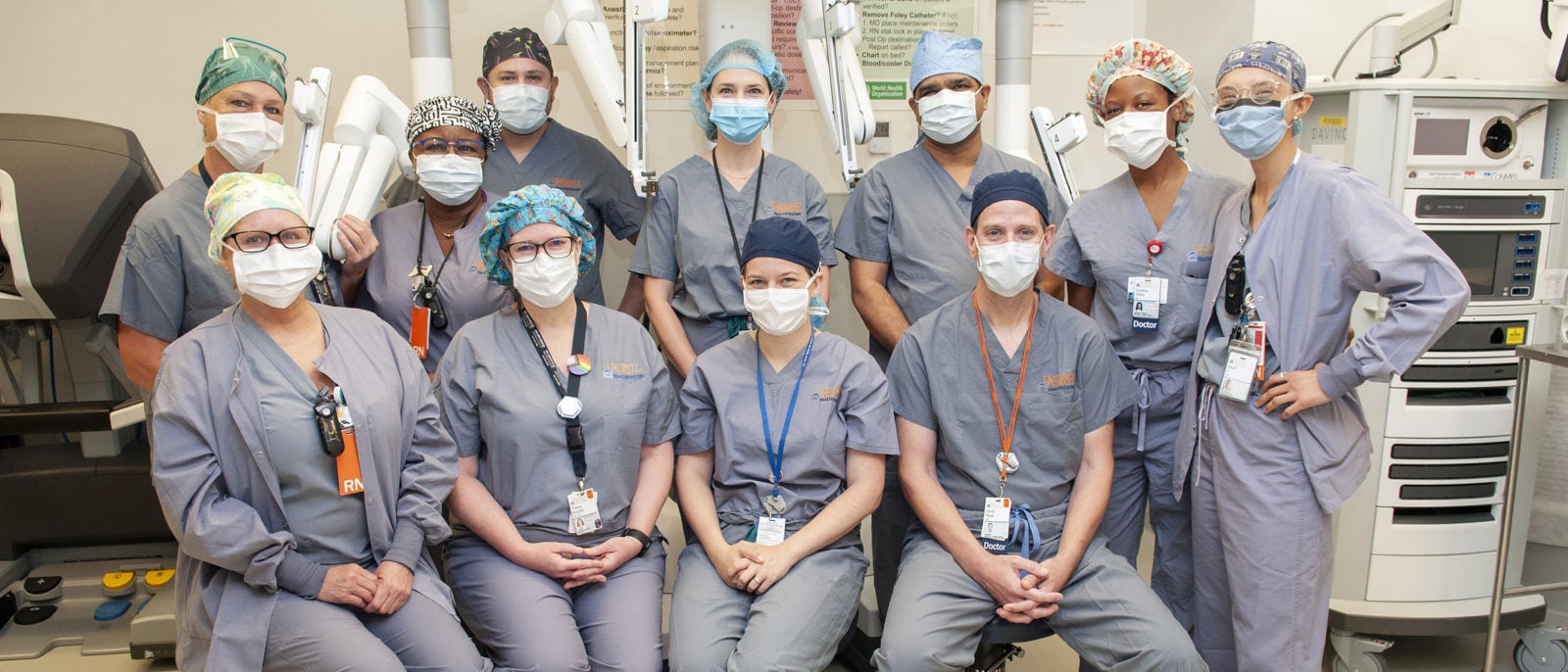
The Urology Team: (back, l-r): Deb Moody, RN; Kay Browne-Hinds, RN; Nicholas Ortiz, MD; Kirsten Greene, MD; Sumit Isharwal, MD; Christine Ibilibor, MD; Sara Sharpe, RN; (sitting) Tanya Pultz, RN; Tracey Krupski, MD; Jackie Zillioux, MD; and David Rapp, MD
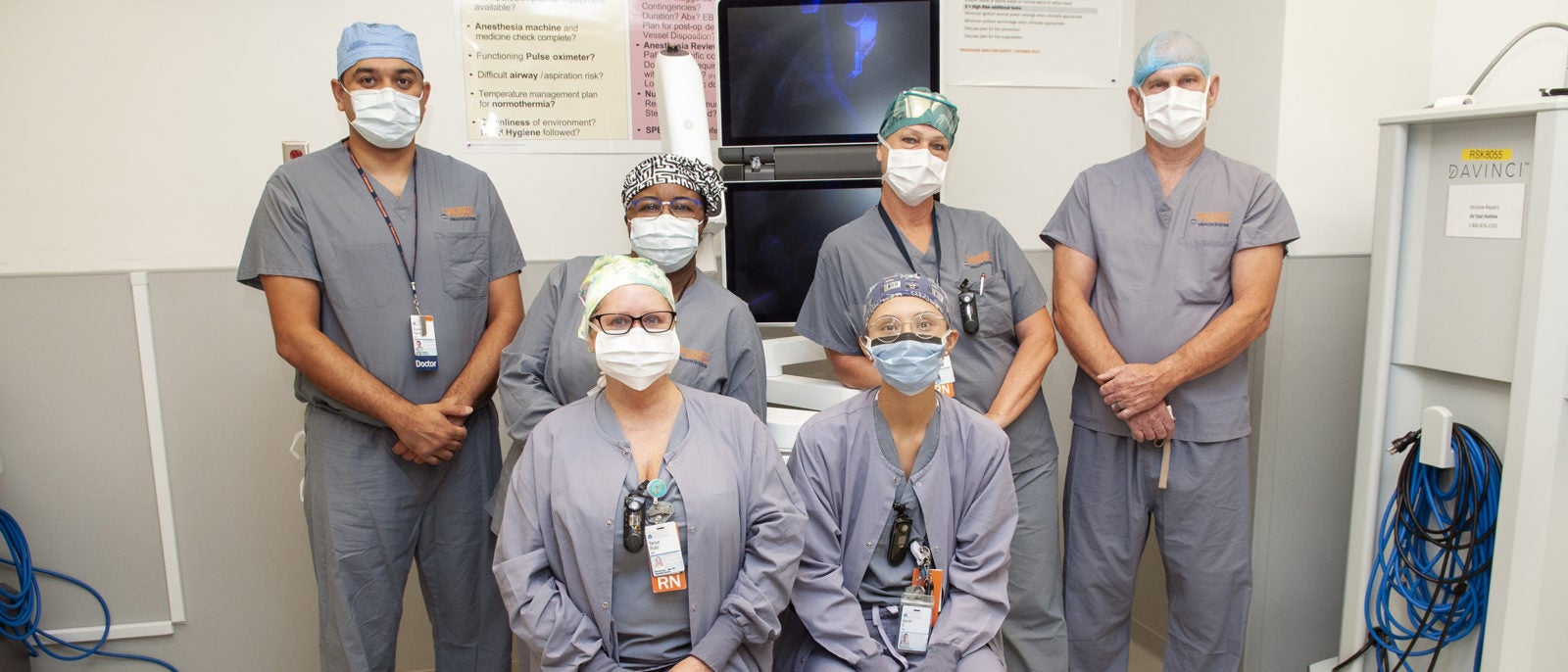
The ION Robot Team with the ION robot: (back, l-r): Subodh Pandey, MD; Kay Browne-Hinds, RN; Deb Moody, RN; Steve Vider, CST; (sitting) Tanya Pultz, RN; and Sara Sharpe, RN
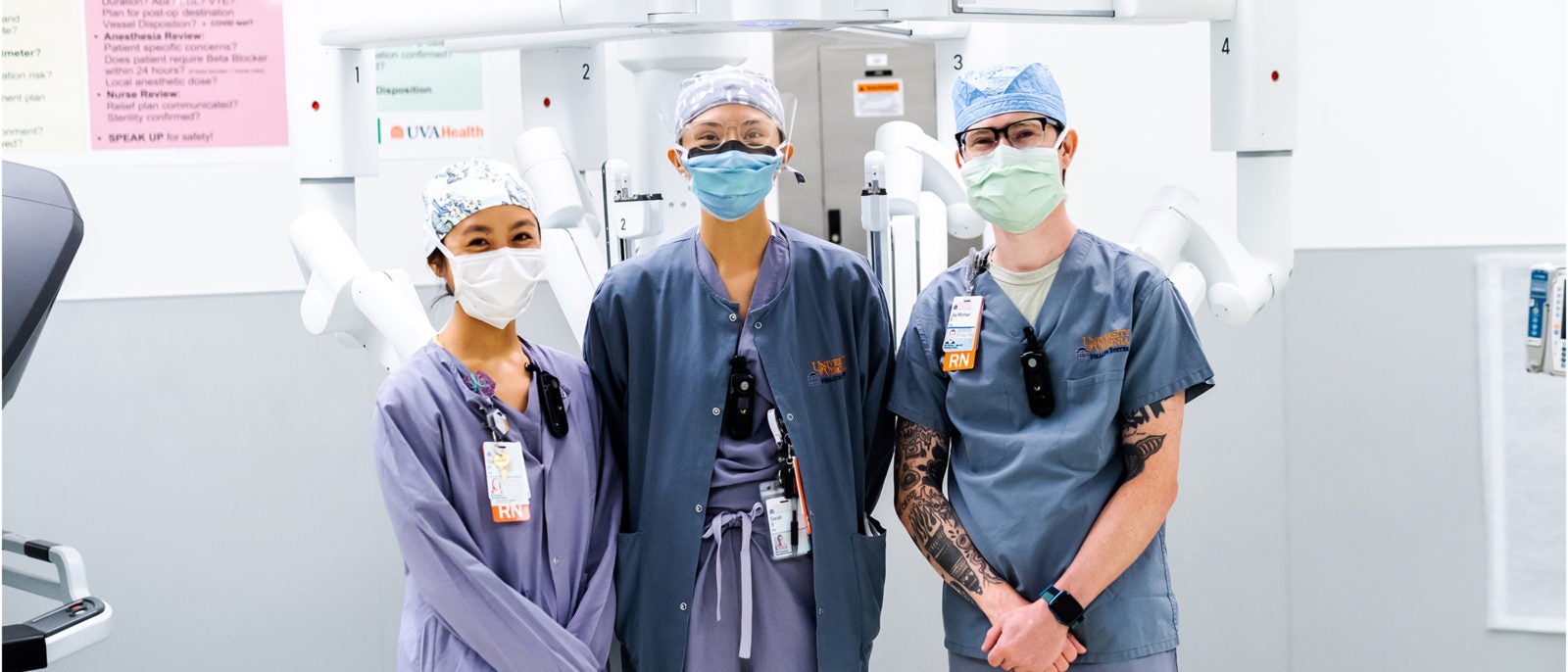
The Thoracic Robot Nursing team: (l-r) Sonia He, RN; Sara Sharpe, RN; and Jay Michael Forehand, RN
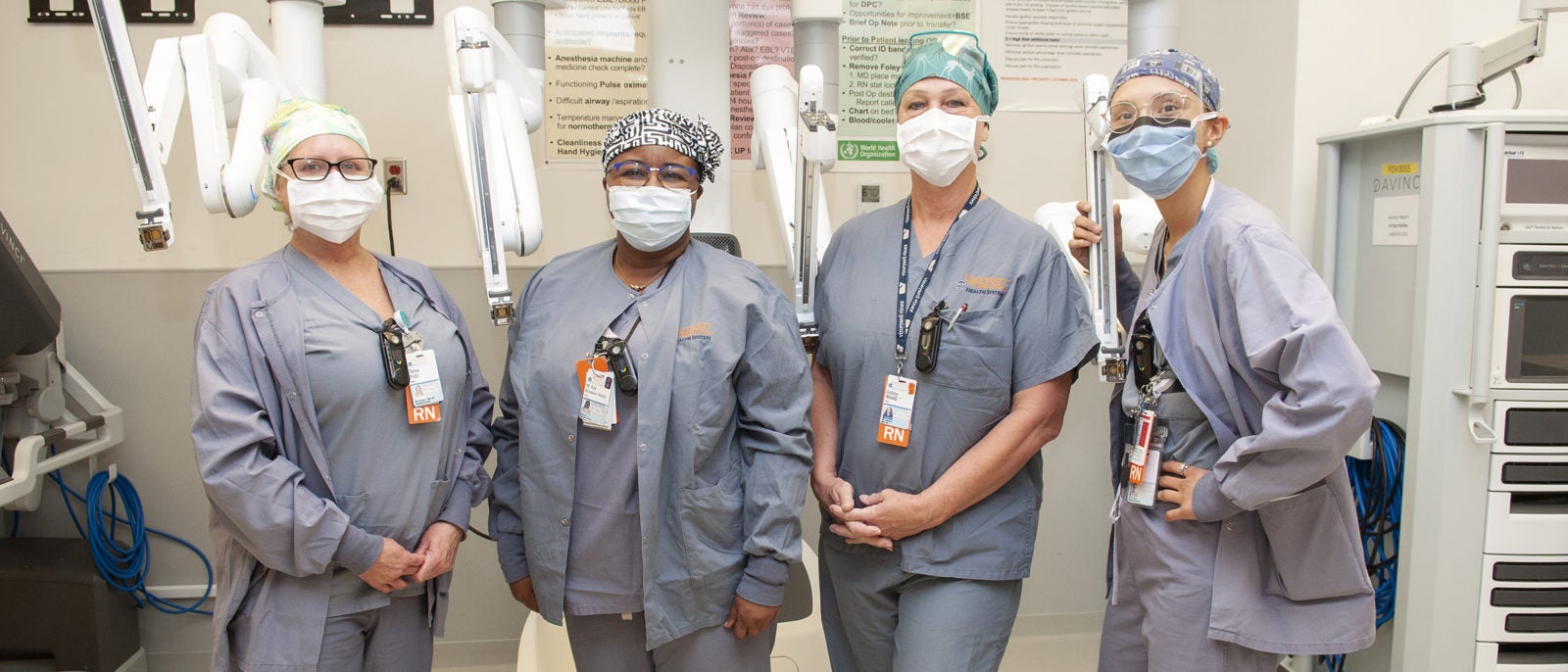
The Robot Nursing Team: (l-r): Tanya Pultz, RN; Kay Browne-Hinds, RN; Deb Moody, RN; and Sara Sharpe, RN. Not pictured: Nicola Wine, ST
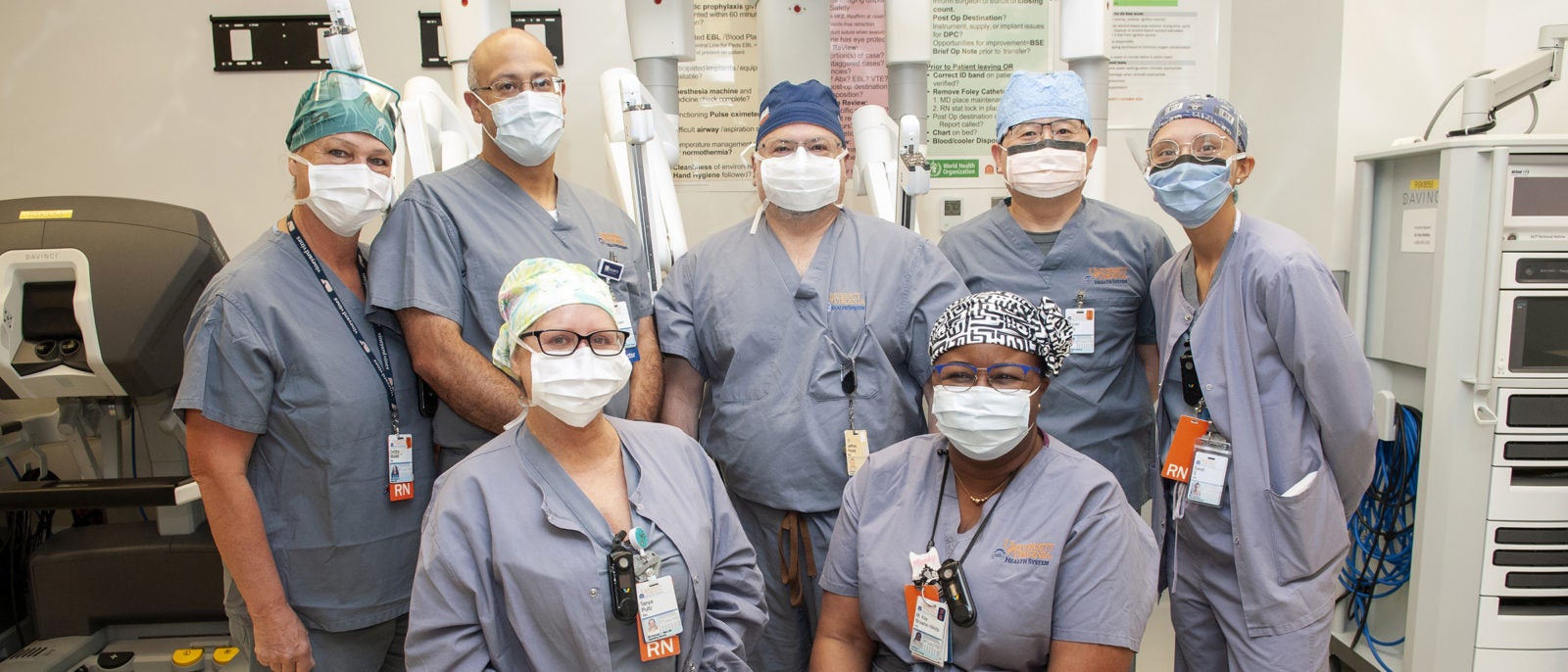
The General Surgery Team: (back, l-r): Deb Moody, RN; Carlos Tache-Leon, MD; Jeff Young, MD; Zequan Yang, MD; Sara Sharpe, RN; (sitting) Tanya Pultz, RN; and Kay Browne-Hinds, RN. Not pictured: Peter Hallowell, MD
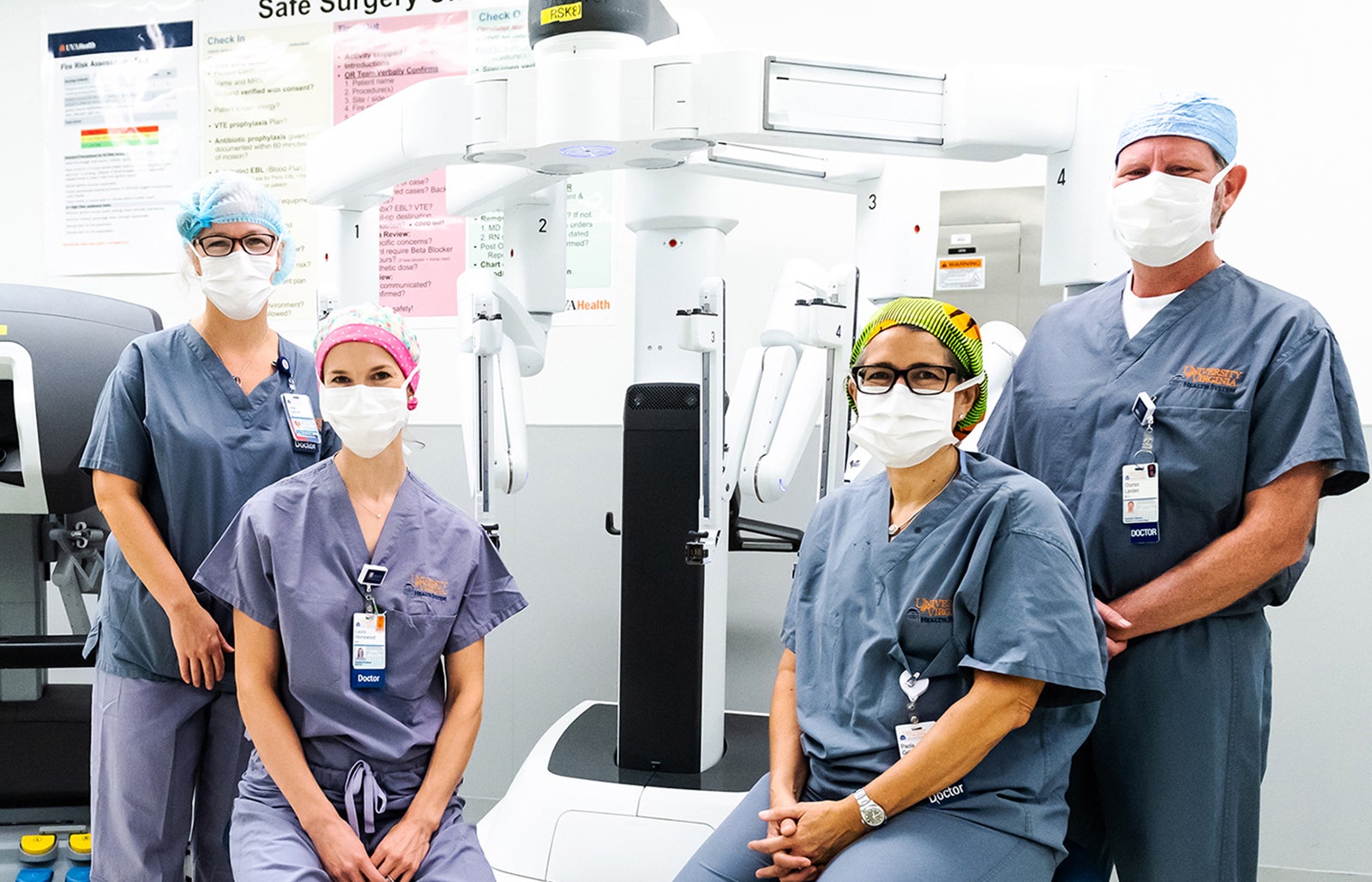
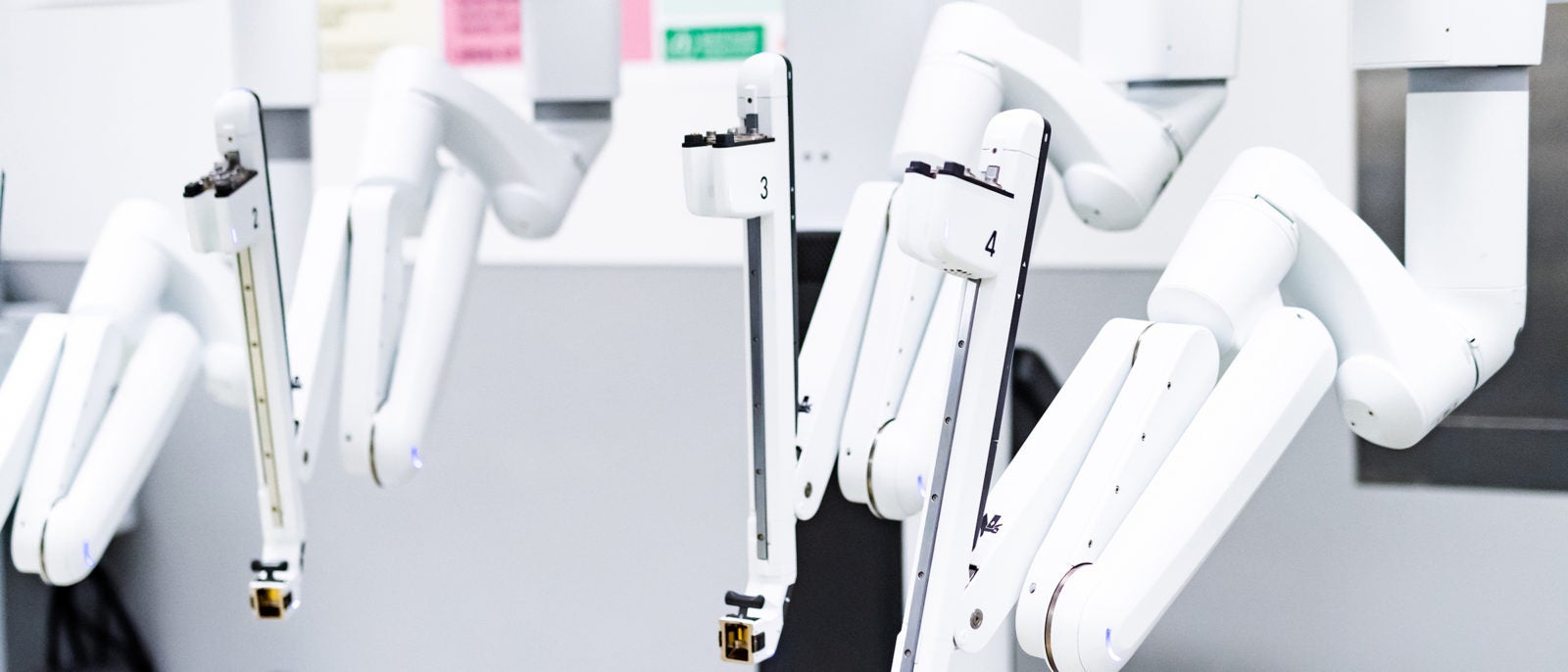
da Vinci Xi patient cart
Latest News


